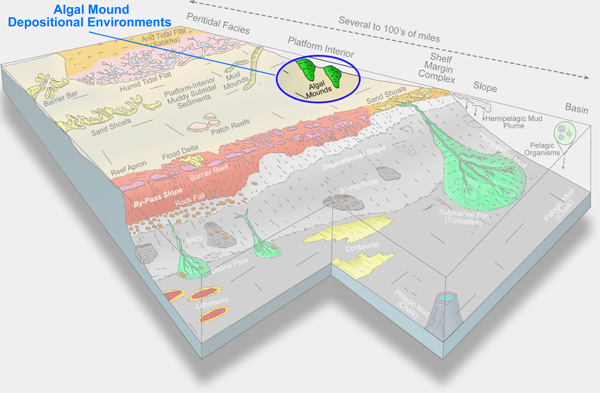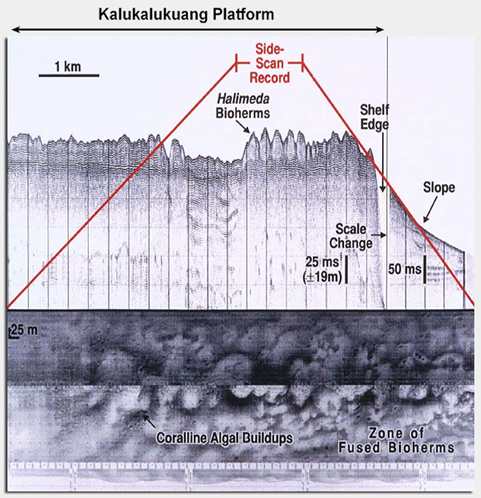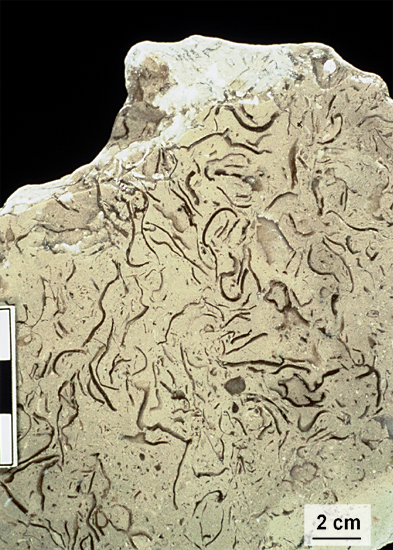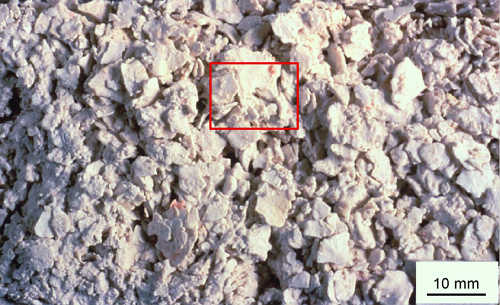|
|
|
Algal Mound Depositional Environments

Algal
mounds composed of the green algae Halimeda
form distinct bodies in Indonesia and Florida Bay. Similar
algal mounds, common in the ancient record, are composed
of different types of green algae. As the algae grows, it
forms a baffle to mud, and the mud is trapped between the
algae. When the algae die, their carbonate component is
added to the sediment as sand.
|
| |
| Algal
Mounds from Offshore Mahakam Delta in Indonesia |
| An excellent
example of a modern analog to algal mounds was presented by
Roberts et al. (1987) from the offshore area of the Mahakam
Delta in Indonesia (see photos below). The mounds are tens
of meters high and cover tens of square kilometers at the
platform margin and in the platform interior. |
 |
| Sparker
data and side-scan sonar of Halimeda mounds
(bioherms) from Indonesia. The mounds occur in the platform
interior and are several tens of meters high. Data courtesy
of Harry Roberts. |
|
| |
| |
|
| A
soft-sediment core sample from the Halimeda
mound showing accumulated Halimeda plates.
Photograph courtesy of Harry Roberts. Click
in the red box to see thin-section example. |
|
| |
| |
| Rock
Types |
Rock types that characterize this facies range form algal
wackestone, packstone, grainstone, to bafflestones. The
original mineralogy of the algae was aragonite, which undergoes
dissolution during diagenesis, resulting in moldic porosity
if the mold is not later filled with cement.
|
 |
| Pennsylvanian
green algal bafflestone. Algal plates formed a protected
environment in which the mud could settle and be preserved.
Bar scale at left in inches. |
|
| |
| |
|
NEXT
|
|







